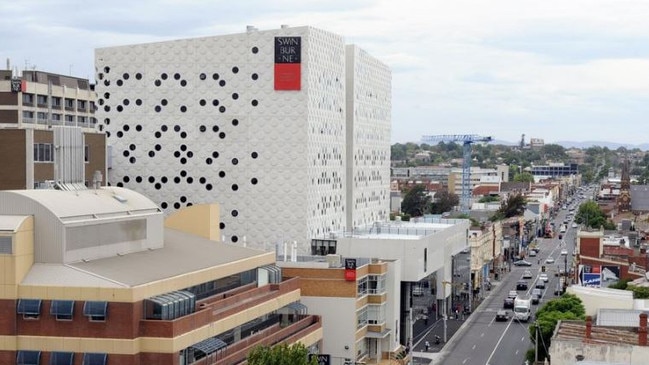Spiralling cost of university will leave some students paying off their HECS debt for decades
Australian university students are facing debts for their degrees that could take more than 40 years to repay, as HECS loans today skyrocket.
Education
Don't miss out on the headlines from Education. Followed categories will be added to My News.
Some university students will need more than 40 years to pay off a single degree, a new report has warned, as fears mount spiralling costs will see enrolments drop.
Research released by the National Tertiary Education Union (NTEU) reveals graduates from a four-year business management degree are likely to be the worst affected, with a staggering repayment period of 44 years, totalling $119,331.
It comes as graduates’ Higher Education Loans Program debts – commonly known as HECS – will today skyrocket to the highest level in the three decades since the government scheme began operating.
Indexation is added on June 1 each year to adjust debts in line with the consumer price index and cost of living.
Graduates face an average increase of more than $1700 a year on their debts under the new indexation rate – 7.1 per cent.
The NTEU study found many four-year degrees could end up costing more than $100,000 once debts are repaid.

A humanities and social sciences honours degree could take 40 years to repay at a cost of $110,353.
Female law graduates could take 36 years to pay off their qualification, four years more than their male counterparts.
Current total outstanding HECS debt stands at $74.3b for the financial year ending 2022, around four times as much as 2009.
NTEU national president Dr Alison Barnes said soaring university costs could also stop future students from enrolling.
“We’re worried the rising cost of degrees could discourage prospective students, especially people from disadvantaged backgrounds, from enrolling,” she said.
“We should be doing everything we can to ensure everyone who wants to study has an equal opportunity to, regardless of your background.”
Dr Barnes said there were substantial knock-on effects of indexation not just for students but also for university staff.
She said while HECS debts rise in line with inflation, federal funding for courses is not automatically indexed.
“This creates a serious problem in how higher education is funded, with inflation running ahead of money being spent on courses,” she said.
“That can have serious implications for students with staff workloads stretched to the limit.
“It also makes it difficult to address the rampant casualisation of the university workforce.”
RMIT University Student Union said graduates will be stopped from achieving important financial milestones due to the rise in costs.
“Rapidly increasing student loans will keep graduates in debt for longer, delaying or preventing them from being able to make significant future investments, such as home ownership,” they said.

Analysis from personal finance marketplace and advice company Compare Club reveals on average, HECS will now cut around $15,000 from a graduate’s borrowing power or more than $100,000 from a higher earner with more debt.
Swinburne student union president Kishaun Aloysius said the indexation was “another example of our tax system being stacked against younger Australians”.
“We support the introduction of a cap on indexation so students are not left with a generational debt trap they need to pay off,” he said.
“We should be incentivising students to go on to be long-term taxpayers to the Australian economy”.





